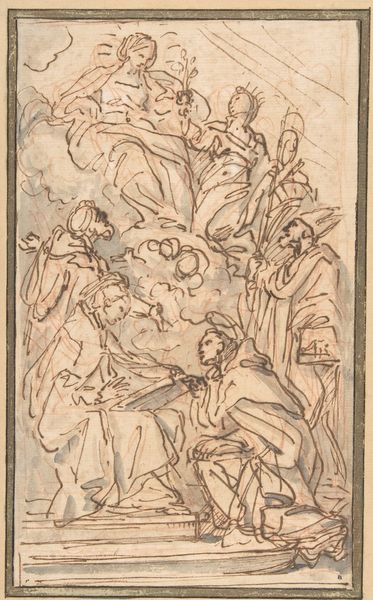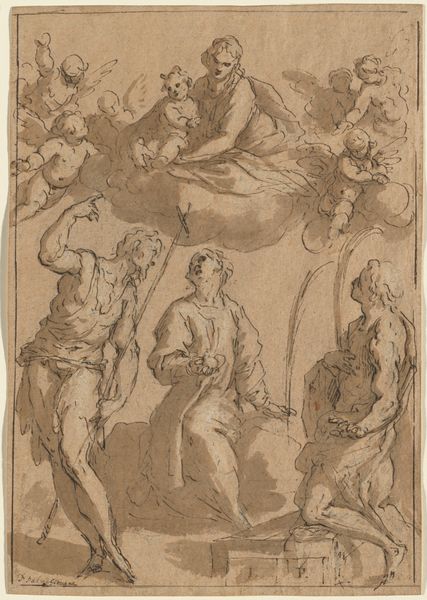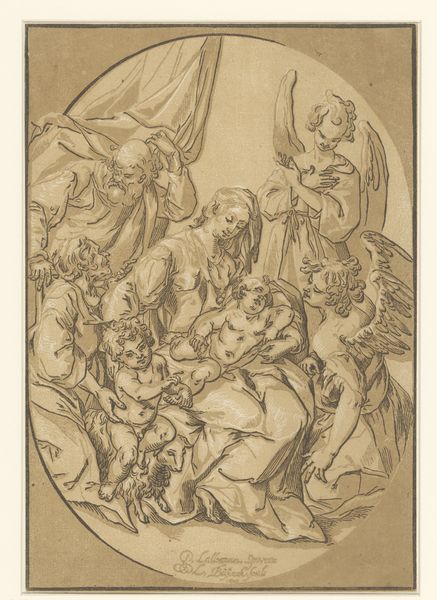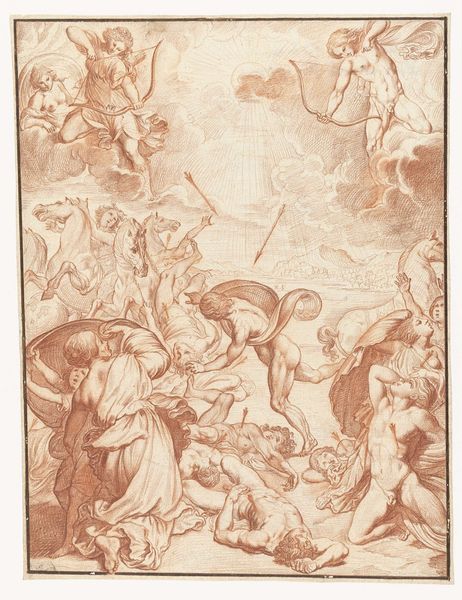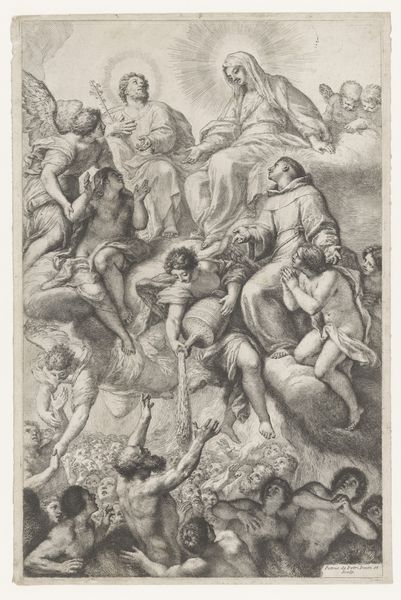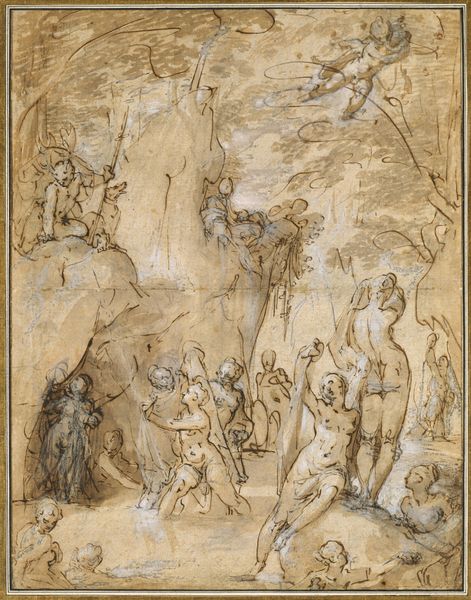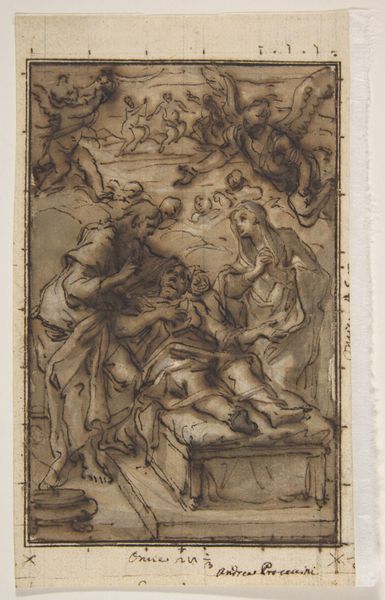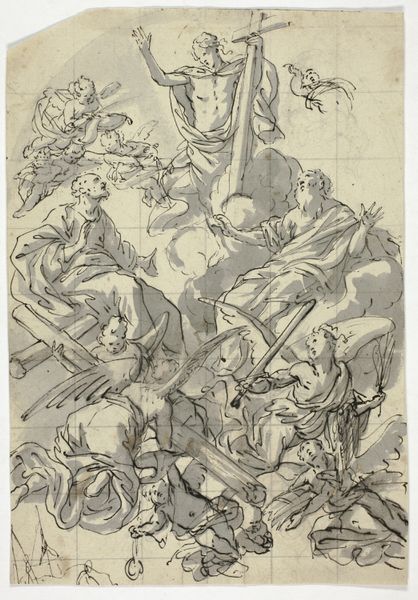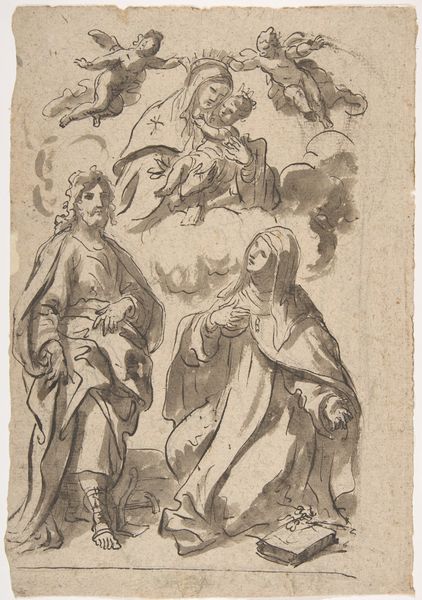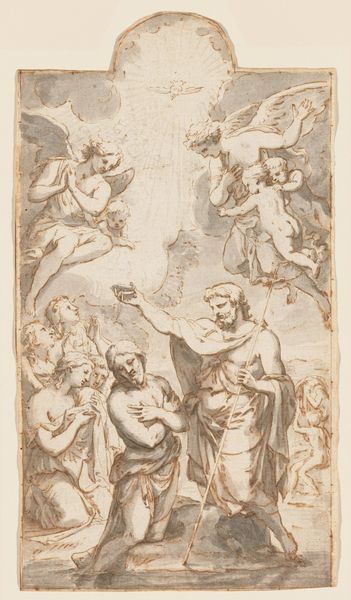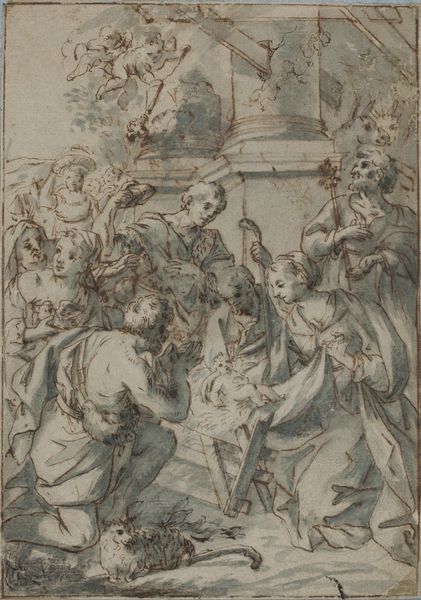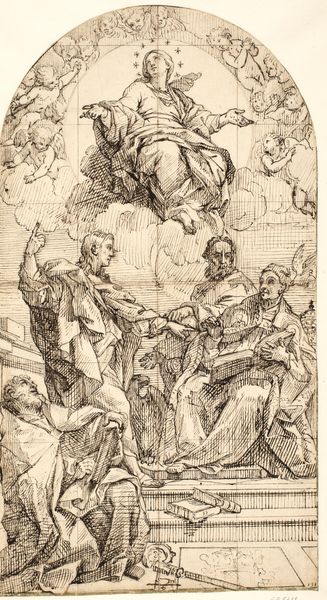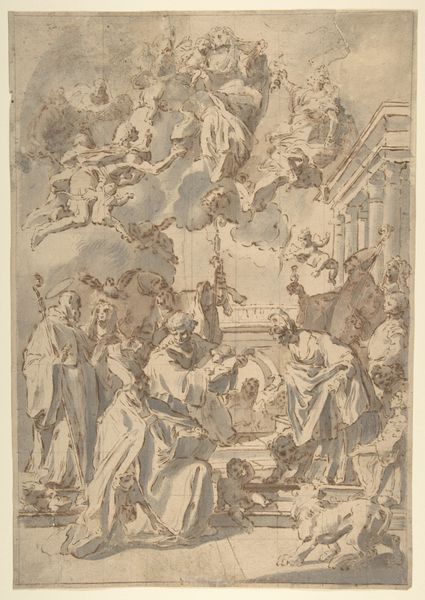
Dying Man Being Consoled by Christ on the Cross, Virgin and Saints n.d.
0:00
0:00
drawing, print, paper, ink, chalk
#
drawing
#
narrative-art
#
baroque
#
ink painting
# print
#
pencil sketch
#
figuration
#
paper
#
ink
#
chalk
#
men
#
history-painting
Dimensions: 126 × 85 mm
Copyright: Public Domain
Editor: This drawing, titled "Dying Man Being Consoled by Christ on the Cross, Virgin and Saints," by Gottfried Bernhard Goetz, uses ink, chalk, and paper. There's an almost dreamlike quality to the rendering, a blurring of realities in the scene. How should we interpret this piece? Curator: This piece reveals much about the conditions of artistic production in its time. The choice of readily available, relatively inexpensive materials like ink and chalk on paper suggests a practical, perhaps workshop-driven approach to artmaking. This wasn't about preciousness, but about process. Editor: Interesting. So, it's more about function over the final, polished artwork? Curator: Precisely. Think about the paper itself—likely handmade, potentially bearing watermarks connecting it to specific mills and trade networks. Each stroke of ink reflects not only Goetz's hand but also the economic and social realities of material acquisition. Is it possible that this would be used as a study for something greater? Editor: Possibly! Considering the social aspect, could this also reflect the labor involved in creating devotional art, and the market for such works at the time? Curator: Absolutely. Religious iconography wasn't just about spiritual expression; it was also a commodity. This drawing reveals the artist's reliance on the infrastructures that facilitated both its creation and dissemination—patrons, workshops, printmakers. Consider also that devotional images, produced en masse, catered to a burgeoning market for accessible spiritual artifacts. The availability, as well as cost, informed the final artwork. Editor: That makes me look at it completely differently! Instead of just a religious scene, I’m seeing it as a product of its time. Curator: Indeed. By foregrounding materiality and means of production, we start to unravel the complex relationships between art, labor, and consumption in a historical context. Editor: That’s a powerful perspective, I hadn’t thought about it that way. Thank you!
Comments
No comments
Be the first to comment and join the conversation on the ultimate creative platform.

